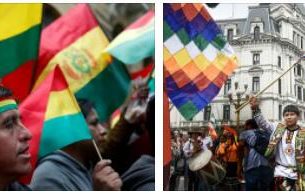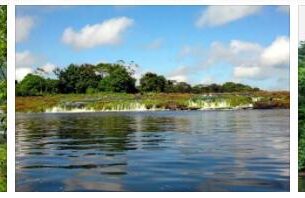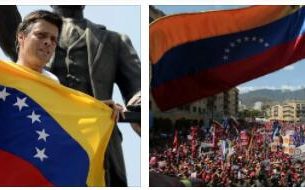GENERAL
Official name of the state
Federative Republic of Brazil.
Capital
Brasília.
Geography
According to computerannals, Brazil covers almost half of South America (fifth largest country on earth) and borders on all South American countries with the exception of Chile and Ecuador. The Atlantic forms the eastern border. The country consists of about 60% plateau and 40% flat land. In the south, at the border triangle of Brazil, Argentina and Paraguay, the Iguaçu Falls are located in the middle of the jungle. The Guyana plateau north of the Amazon consists partly of dense forests, partly of stone desert. Between the Amazon and the rivers of the south lies the state of Mato Grosso, Brazil’s huge plateau. The mountains in the southeast, Sierra da Mantiqueira, reach a height of around 2800 m. Lower mountains, e.g. B. in Rio de Janeiro, form a barrier on the Atlantic coast, which is broken by numerous lagoons. The states of Minas Gerais (in the south), São Paulo, Rio de Janeiro and Paraná are densely populated. Including the offshore islands, Brazil lies in three time zones.
Government
Presidential federal republic since 1988. Constitution of 1988, last amendment 2010. Bicameral federal parliament: House of Representatives (513 members) and Senate (81 members). Direct election of the head of state every 4 years (one-time re-election). The 26 states have their own state parliaments, each headed by a governor. Independent since 1822 (former Portuguese colony). Member of the United Nations.
Head of state
Interim President: Michel Temer, since May 2016.
Head of government
Michel Temer, since May 2016
Electricity
Salvador (Bahia) and Manaus: 127 V / 60 Hz;
Brasília and Recife: 220 V, 60 Hz;
Rio de Janeiro and São Paulo 110-120 V, 60 Hz.
Mostly two- or three-pole plugs. Adapter necessary.
Most of the larger hotels have 110 and 220 V sockets.
MONEY
Currency
1 Brazilian real = 100 centavos. Currency abbreviation: R $, BRL (ISO code).
There are banknotes in denominations of 100, 50, 20, 10, 5, 2 and 1 BRL;
Coins with denominations of 1 BRL and 50, 25, 10, 5 and 1 Centavos.
The 1 BRL banknote is no longer printed, but is still valid.
However, in some shops it is no longer accepted as a form of payment.
1 centavo coins are hardly in circulation anymore.
Credit cards
Most international credit cards are widely accepted in Brazil. American Express, MasterCard, Diners Club and Visa are widely accepted, Eurocard is less common. Details from the issuer of the credit card in question.
Hotels, restaurants, shops, travel agents, and car rental companies all accept credit cards.
ATMs
ec / Maestro card / Sparcard
cards with the Cirrus or Maestro symbol are accepted throughout Europe and worldwide. Further information from banks and credit institutes.
Attention: Travelers who pay abroad with their bank customer card and want to withdraw money should find out about the possibilities of using their card from their bank before starting their journey. It is also advised that travelers should not withdraw cash from machines on the street. It is safer to withdraw cash from ATMs in banks and shopping centers. When withdrawing money from ATMs, travelers should always look out for devices that criminals use to copy the secret code and bank card.
Note: Cash withdrawals at numerous ATMs with credit cards and EC cards are currently either not possible at all or only to a limited extent. Travelers should therefore have an alternative money supply.
Bank opening times
Mon-Fri 10 a.m.-4 p.m.
Foreign exchange regulations
The import and export of the local currency and foreign currencies is unlimited; Obligation to declare amounts above the equivalent of BRL 10,000.
Currency Exchange
Almost all banks, exchange offices, travel agencies and authorized hotels change travelers checks and foreign currencies. There are ATMs in major cities where cash can be withdrawn in local currency. As a precaution, however, you should withdraw cash with a credit card at the airport or carry travelers checks (see travelers checks) with you.
LANGUAGE
Overview
The official language is Portuguese in the Brazilian variant. English and Spanish are spoken sporadically. German is also spoken in the south, especially in Santa Catarina, Rio Grande do Sul and Paraná as well as French and Italian; around 180 Indian languages.
PUBLIC HOLIDAYS
Annotation
Public holidays that fall on a weekday are moved to the previous Monday, with the exception of New Year, Labor Day, Independence Day, Christmas and Good Friday.
* Holidays are only observed regionally.
CULTURE
Religion
Mostly Roman Catholic; approx. 16% Protestants, other Christian communities, minorities of Buddhists, Baha’i, Muslims and Jews; Natural religions and Afro-Brazilian cults.
Social rules of conduct
You shake hands in greeting. Brazilians are very hospitable and often offer tea or coffee or even a whole meal. A Brazilian takes a lot of time and does not rush into anything. Accordingly, you have to bring a lot of time with you, for example in banks, snack bars, with luggage storage, etc. A bouquet of flowers is gladly accepted. Souvenirs from the visitor’s home country are also popular. Casual wear is acceptable during the day, but dress a little more elegantly in the evening. Written invitations to social events generally contain information about the cloakroom.
Smoking is permitted almost everywhere. The majority of the population is Roman Catholic and very religious, visitors should respect this. In big cities, beware of pickpockets.
Tip: 10-15% is appropriate. Sometimes the service charge is already included in the invoice.
CLIMATE
Best travel time
Dry bushland in the interior of the country, rainforest on the Amazon and beaches on the east coast ensure a regionally very different climate. Temperatures in the south are more moderate or subtropical in the north they are tropical. Rainy season in the north from January to April, in the northeast from April to July and in the Rio / São Paulo area from November to March. Despite the rainy season, the best time to travel in Brazilian spring and winter is from April to October.
COUNTRY DATA
Area code +55 Area (km2) 8515770 Population 210274356 Population density (per km2) 24 Population in 2016 Member of the EU No main emergency number 192




